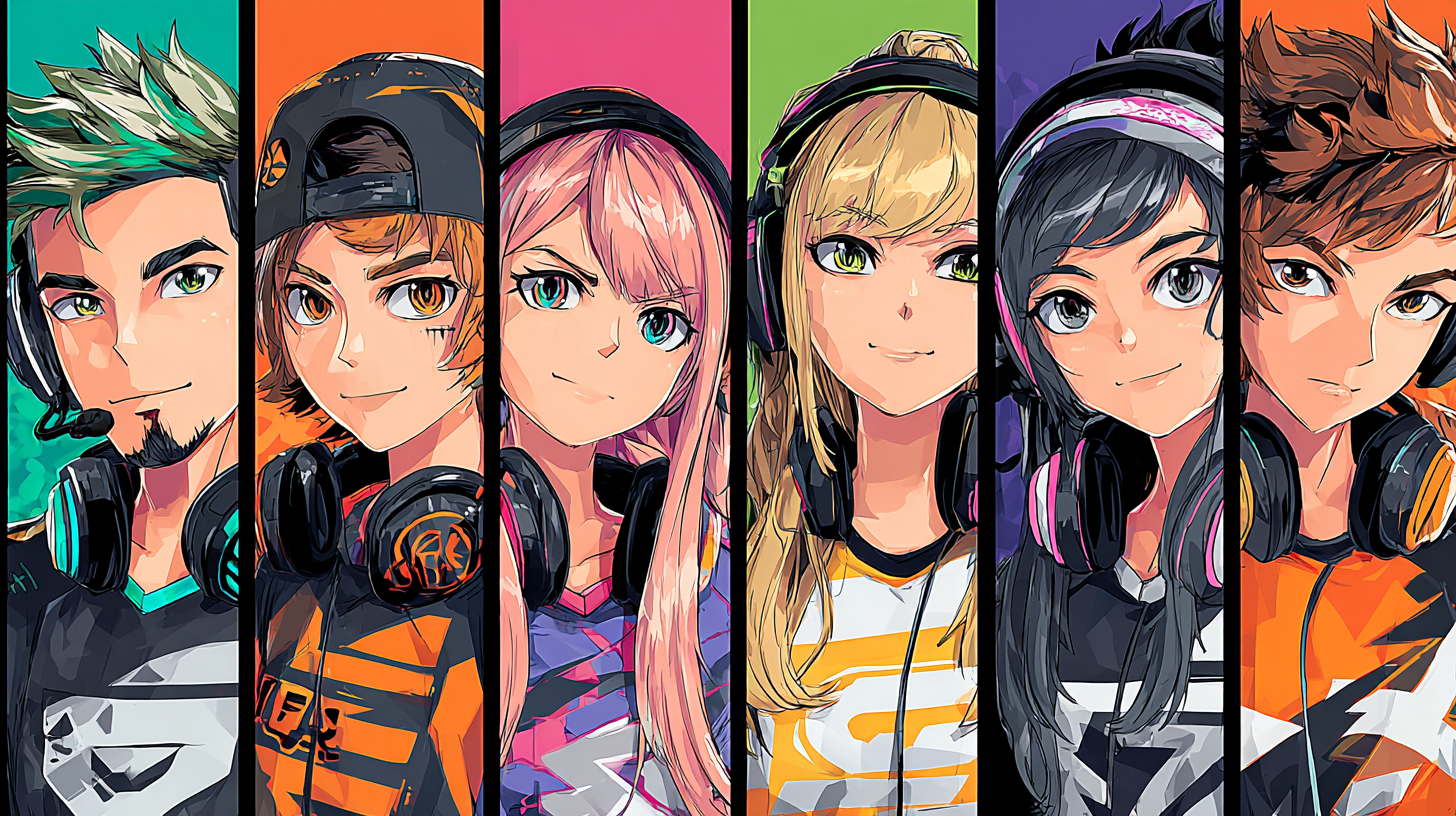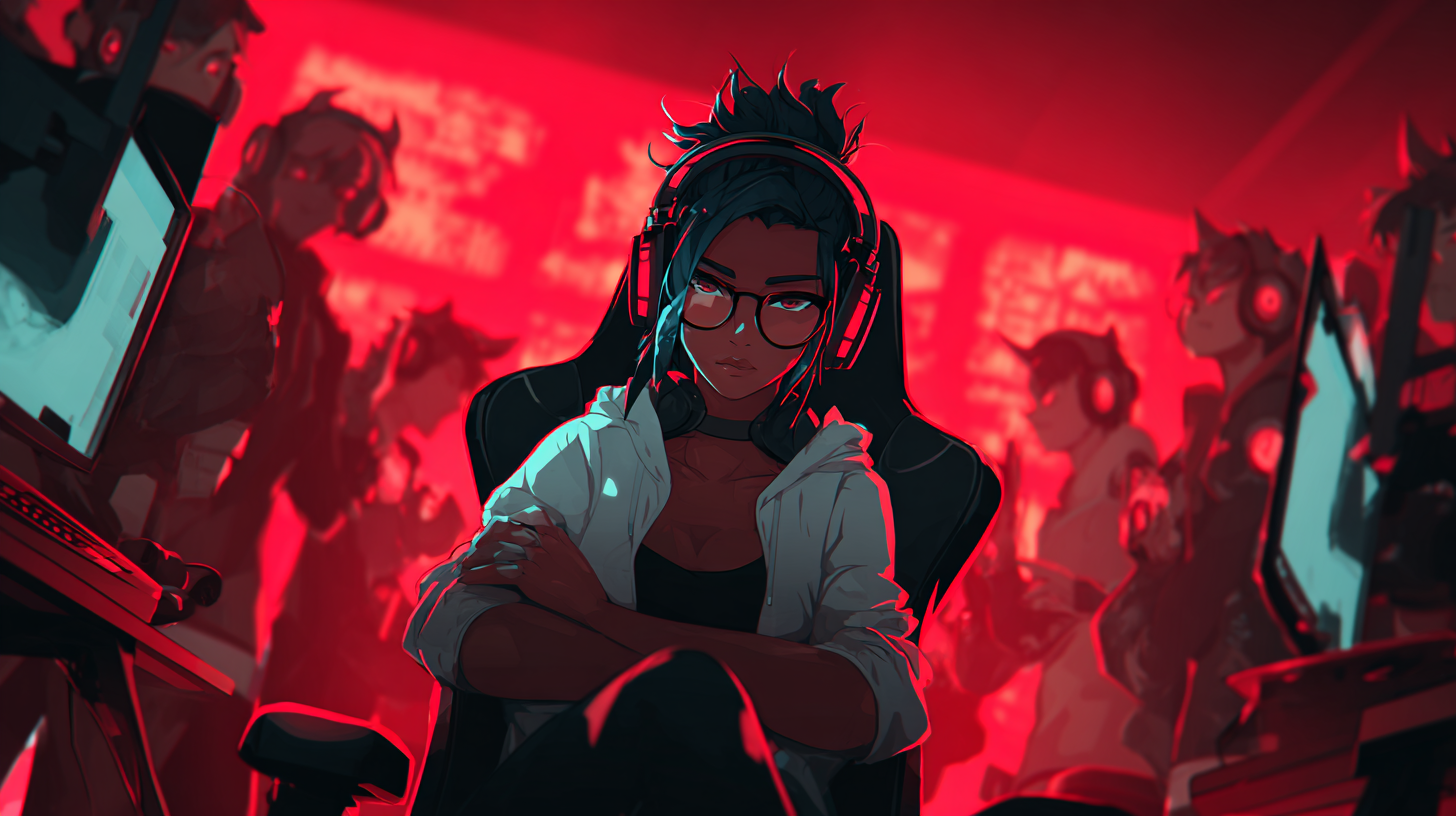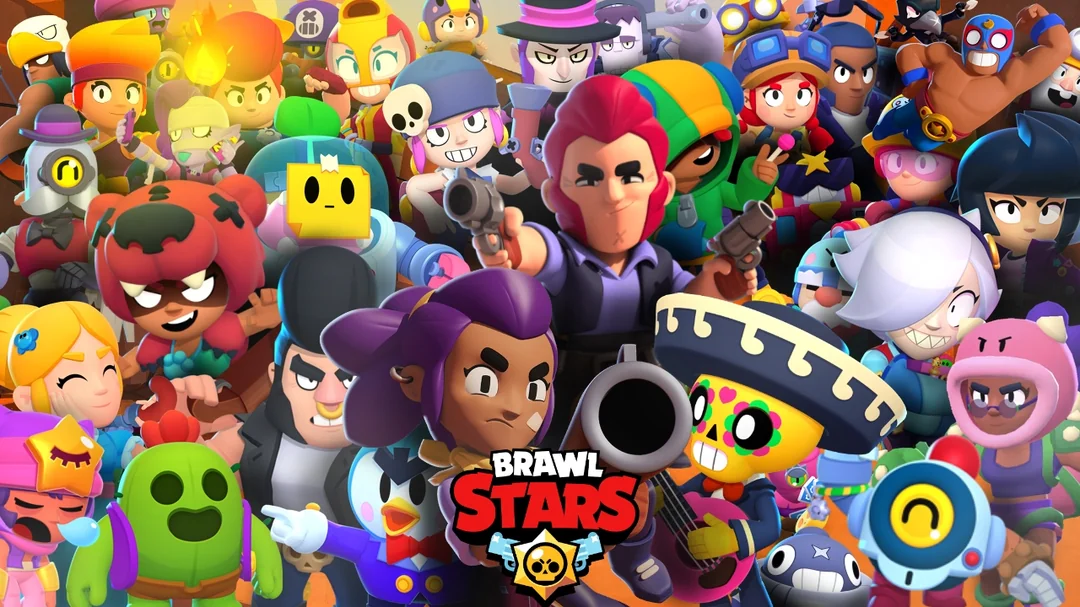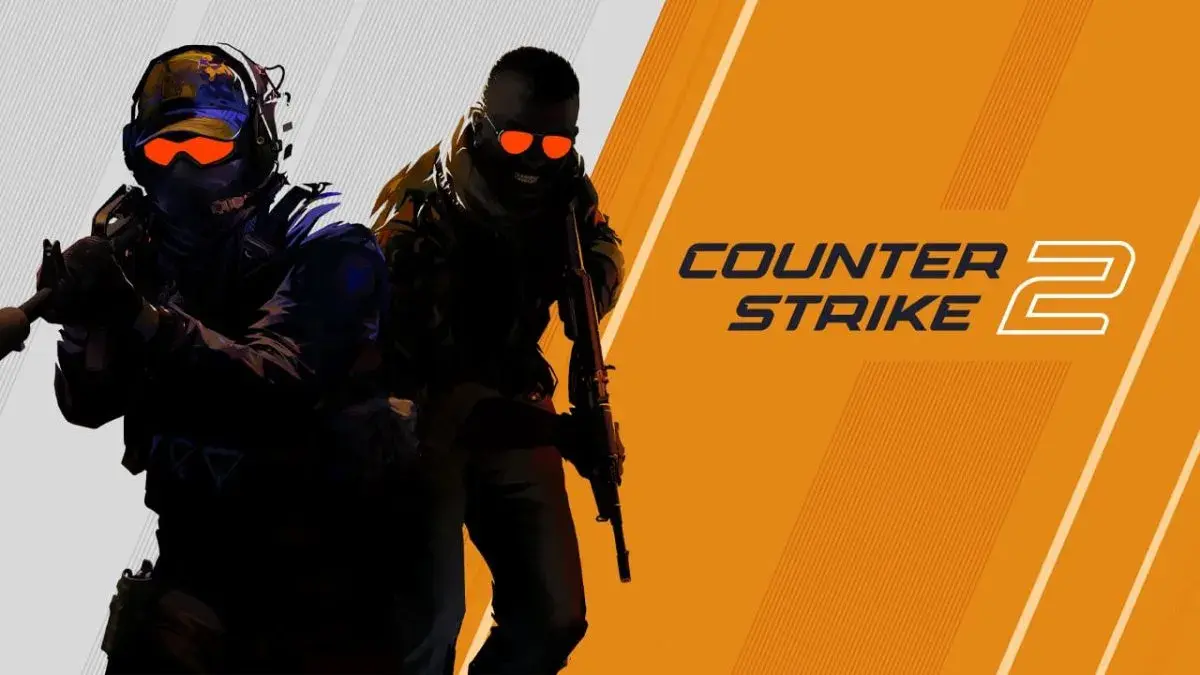You've seen it happen a dozen times. A gaming community launches with enthusiasm, Discord fills with excited members, events are scheduled, and everything seems perfect. Then, three months later, the server is a ghost town. Chat channels sit silent. The founder has moved on. Another gaming community bites the dust.
The harsh reality? Over 80% of gaming communities fail within their first six months. But the 20% that survive share specific traits, systems, and leadership approaches that most founders never discover until it's too late.
Introduction
Building gaming communities that stand the test of time isn't about having the most members or the flashiest Discord server. It's about creating sustainable systems, fostering genuine connections, and solving real problems for your members. After analyzing hundreds of successful gaming communities and interviewing dozens of community leaders, we've identified the exact frameworks that separate thriving communities from those that collapse.
This comprehensive guide covers everything from initial governance structures to long-term engagement strategies. Whether you're starting a new gaming community from scratch or trying to revive a struggling one, you'll learn the proven tactics that keep members active, engaged, and loyal for years.
While finding the right members and maintaining engagement can be challenging, modern platforms like Jynx are making it easier with features designed specifically for community building and sustainable growth.
Why Most Gaming Communities Fail
Understanding failure is the first step toward success. Most gaming communities collapse for predictable, preventable reasons.
The Founder Burnout Trap
The typical pattern looks like this:
- Week 1-4: Founder is incredibly active, personally greeting every new member, organizing events, moderating everything
- Week 5-8: Founder begins to feel overwhelmed, starts responding slower, events become less frequent
- Week 9-12: Founder is exhausted, resentful of the community they created, engagement plummets
- Week 13+: Founder ghosts the community, leaving it to die
This happens because founders try to be everything to everyone. They don't build systems or delegate effectively. They burn bright and fast, taking the community down with them.
No Clear Purpose or Identity
Generic gaming communities fail. "A place for gamers to hang out" isn't compelling. Successful communities answer these questions clearly:
- What specific problem do we solve for our members?
- Who exactly is this community for (and not for)?
- What makes us different from the thousand other gaming discords?
- Why should someone invest time here versus elsewhere?
Without clear answers, you attract random people with nothing in common, creating a fractured community with no cohesion.
Poor Governance and Rules
Communities need structure, but most get it wrong in one of two ways:
Over-moderation: Rules for everything, mods deleting messages constantly, members walking on eggshells, fun sucked out of the experience.
Under-moderation: No clear rules, toxic behavior tolerated, quality members leave, community devolves into chaos.
The sweet spot requires thoughtful governance design from day one.
The Growth-at-All-Costs Mistake
Many founders obsess over member counts while ignoring engagement metrics. They end up with:
- 5,000 members but only 50 active
- Mass-invite bots bringing low-quality members
- Diluted community culture
- Overwhelmed moderation teams
Successful communities prioritize engagement rate over raw size. A 100-member community with 70% weekly active users is infinitely healthier than a 10,000-member server with 2% engagement.
No Path to Contribution
Members join with enthusiasm but find no meaningful way to contribute. There's no ladder from "new member" to "valued contributor" to "community leader." Everyone stays a passive consumer, never developing ownership or investment in the community's success.
Designing Effective Leadership Structures
The right leadership structure determines everything. Here's what actually works.
The Three-Tier Leadership Model
Successful gaming communities use this structure:
Tier 1: Core Leadership (2-4 people)
- Community founders/owners
- Make strategic decisions
- Handle conflicts and appeals
- Set vision and direction
- Weekly sync meetings minimum
Tier 2: Department Leads (5-10 people)
- Event coordinators
- Moderation leads
- Content creators
- Technical admins
- Recruitment managers
Each leads their specific domain with autonomy within established guidelines.
Tier 3: Community Contributors (15-30% of active members)
- Event helpers
- Moderators
- Mentors for new members
- Content creators
- Subject matter experts
This creates clear progression paths and prevents founder burnout.
Role-Based Permissions Done Right
Most communities either give moderators full access or almost nothing. Better approach:
Moderator Tiers:
- Junior Mods: Can warn, mute (temporary), move messages to appropriate channels
- Senior Mods: Can kick, temporary ban, manage channels
- Admin Mods: Can permanent ban, change server settings, manage roles
Specialized Roles:
- Event Coordinators: Can create events, manage event channels, announce schedules
- Tech Admins: Bot management, integrations, channel architecture
- Content Managers: Pin messages, manage resources, curate highlights
This is exactly why platforms like Jynx built sophisticated role-based permission systems—proper access control is fundamental to community health.
Decision-Making Frameworks
Avoid both dictatorships and chaos with clear decision frameworks:
Immediate Decisions (moderators can act instantly):
- Clear rule violations
- Spam/bot accounts
- Obvious harassment
Department Decisions (department leads decide):
- Event scheduling
- Channel organization within their domain
- Feature implementations in their area
Leadership Decisions (core team discusses):
- Rule changes
- Partnership agreements
- Major community direction shifts
- Permanent bans for controversial cases
Community Decisions (members vote):
- Community name/branding changes
- Major feature additions
- Event types to prioritize
- Server game focuses
This prevents both bottlenecks and chaos.
The Succession Problem
What happens when a founder leaves? Plan for this from day one:
- Document all processes and systems
- Cross-train leadership on critical functions
- Establish clear ownership transfer procedures
- Build culture that survives individual departures
Communities built around personalities die with them. Communities built around systems survive leadership changes.
Creating Rules That Actually Work
Rules shape behavior. Here's how to design them effectively.
The Minimum Viable Ruleset
Start with these core categories:
1. Respect and Conduct
- No harassment, hate speech, or discrimination
- No doxxing or privacy violations
- Disagreement is welcome; personal attacks are not
- Assume good faith in others
2. Content Guidelines
- No NSFW content (or clearly labeled in designated channels)
- No spam or self-promotion without permission
- English in main channels, other languages in designated areas
- Spoilers must be tagged
3. Channel Usage
- Keep discussions in appropriate channels
- No excessive off-topic conversation in specific-purpose channels
- Voice channels have additional etiquette rules
4. Moderation
- Moderator decisions are final unless appealed to leadership
- Appeals go through designated process
- Attempting to circumvent bans results in permanent ban
That's it. You can always add more later, but starting minimal prevents overwhelming new members.
The Warning-Kick-Ban Progression
Clear escalation prevents mod inconsistency:
First Offense: Friendly warning, explain the rule Second Offense: Official warning, logged in mod channel Third Offense: 24-hour timeout/mute Fourth Offense: 7-day kick Fifth Offense: Permanent ban with appeal option after 30 days
Exceptions (instant permanent ban):
- Doxxing or real-world threats
- Sharing illegal content
- Coordinated harassment
- Ban evasion attempts
Documenting Decisions
Every moderation action should be logged:
- Who took the action
- What rule was violated
- What action was taken
- Any context or notes
This creates accountability, identifies problem patterns, and prevents "he said, she said" situations.
Regular Rule Reviews
Schedule quarterly reviews:
- Are current rules working?
- Do we need new rules for emerging issues?
- Can we remove rules that aren't necessary?
- Are mods applying rules consistently?
Rules should evolve with your community.
Engagement and Retention Strategies
Getting members is easier than keeping them. Here's how to maintain long-term engagement.
The First 48 Hours Experience
Members decide within 48 hours whether to stay. Optimize this window:
Automated Welcome Sequence:
- Welcome message with quick-start guide
- Channel overview (don't overwhelm, highlight key areas)
- Current events or activities they can join immediately
- Ice-breaker prompt or introduction template
Personal Touch:
- Leadership or welcomers greet new members personally
- Ask about their gaming interests
- Introduce them to similar members
- Invite them to upcoming events
Quick Win: Give them a small achievement fast:
- Assign first role after introduction
- Thank them for first contribution
- Recognize their expertise in something
- Include them in conversation immediately
The Content Calendar Approach
Consistency beats intensity. Create a predictable rhythm:
Daily Events:
- Morning discussion prompts
- Evening gaming sessions
- Daily challenges or achievements
Weekly Events:
- Monday: Week kickoff and game night announcements
- Wednesday: Mid-week tournaments or competitions
- Friday: Community game nights
- Sunday: Week recap and highlights
Monthly Events:
- First Saturday: Major tournament or event
- Third Sunday: Community meeting and feedback
- Last Friday: Social events and celebrations
Members return when they know something valuable happens on a schedule.
The Contribution Ladder
Create clear paths from passive to active participation:
Level 1: Lurker (just joined)
- Can read all channels
- Access to basic resources
- Invitation to introduce themselves
Level 2: Member (introduced themselves)
- Can participate in all discussions
- Invite to general events
- Access to voice channels
Level 3: Regular (active for 2+ weeks)
- Can create temporary channels
- Priority event registration
- Access to exclusive channels
- Voting rights on community decisions
Level 4: Contributor (regularly helpful)
- Can help organize events
- Recognized in community highlights
- Special role and color
- Input on community direction
Level 5: Leadership Track (sustained excellence)
- Invitation to join moderation team
- Department leadership opportunities
- Direct line to core leadership
This is why community boost systems like Jynx's Level 0-3 progression work so well—they gamify contribution while unlocking real value at each tier.
Recognition and Appreciation
People stay where they feel valued:
Public Recognition:
- Weekly "MVP" highlights
- Monthly contributor spotlights
- Achievement announcements
- Milestone celebrations (X months in community)
Private Recognition:
- Direct messages from leadership thanking them
- Surprise role upgrades
- Early access to new features
- Behind-the-scenes inclusion
Peer Recognition:
- Member-nominated awards
- Thanks channels where members appreciate each other
- Reputation or kudos systems
Creating Subgroups and Niches
Don't force everyone into one giant community:
Interest-Based Channels:
- Different games or genres
- Competitive vs casual
- Content creation groups
- Off-topic interests (movies, music, fitness)
Skill-Based Groups:
- Beginner-friendly areas with mentors
- Advanced strategy discussions
- Coaching and improvement channels
Time-Zone Groups:
- Regional channels for coordination
- Time-zone specific event planning
- Local meetup organization
This creates intimate spaces within the larger community where deeper connections form. It's exactly why Jynx emphasizes interest-based communities rather than just game-specific ones—shared values and playstyles matter more than just playing the same title.
Smart Growth Strategies
Sustainable growth requires intentional strategy.
Quality Over Quantity
The best communities grow through:
1. Member Referrals Create a referral system:
- Members get recognition for bringing quality people
- New members identify who invited them
- Track which members bring engaged vs inactive people
- Reward high-quality referrals with perks
2. Content Marketing
- YouTube videos highlighting community culture
- Twitter threads sharing community wins
- Reddit posts (non-spammy) in relevant subreddits
- Twitch streams featuring community members
3. Partnership Growth
- Cross-promotion with complementary communities
- Joint events with other gaming groups
- Streamer partnerships (they bring their community, you provide structure)
4. Organic Discovery
- Optimized Discord discovery settings
- Public channels showcasing best content
- Great branding and clear value proposition
- Strong search presence for your niche
The Application Process
Consider requiring applications for quality control:
Simple Application Questions:
- How did you find us?
- What games do you play?
- What are you looking for in a gaming community?
- Have you read our rules? (summarize one in your own words)
This filters out:
- Bots and spam accounts
- People joining dozens of servers randomly
- Those unwilling to invest minimal effort
- Bad-fit members
Yes, you'll have fewer members. But they'll be better members.
Strategic Partnerships
Don't partner randomly. Look for:
Complementary Communities:
- You focus on Game A, they focus on Game B
- You're competitive, they're casual
- You're North American, they're European
Shared Values:
- Similar moderation philosophies
- Compatible community cultures
- Aligned visions for healthy gaming spaces
Mutual Benefit:
- Both communities gain quality members
- Shared event opportunities
- Resource and knowledge sharing
- Not one-sided extraction
The Revenue Question
Should gaming communities monetize? It's complicated.
Sustainable Approaches:
- Voluntary Support: Patreon/Ko-fi for those who want to support
- Premium Tiers: Optional perks, never pay-to-win advantages
- Server Boosts: Discord Nitro boosting for collective benefits
- Merchandise: Community-branded items with minimal markup
What to Avoid:
- Paywalling basic community access
- Creating resentment between paying and free members
- Letting money influence moderation decisions
- Extraction mindset over value creation
Interestingly, collaborative premium unlocking models like Jynx's community boost system solve this by making premium features a collective achievement rather than individual purchases, reducing friction while maintaining sustainability.
Handling Drama and Conflicts
Every community faces conflict. Leaders who handle it well build stronger communities.
The Drama Prevention Checklist
Most drama is preventable:
1. Clear Expectations
- Rules are documented and visible
- Consequences are predictable
- New members are educated on culture
2. Consistent Moderation
- All moderators apply rules the same way
- Regular mod team calibration meetings
- Written moderation guidelines
3. Early Intervention
- Address small issues before they escalate
- Private conversations for behavior correction
- Quick response to brewing conflicts
4. Healthy Culture
- Leaders model desired behavior
- Positive contributions are recognized
- Toxicity is addressed immediately, not tolerated
The Conflict Resolution Framework
When drama happens:
Step 1: Gather Facts
- What actually happened (not hearsay)
- Who was involved
- What rules were violated
- Any context or history
Step 2: Private Conversations
- Talk to each party separately
- Understand their perspective
- Avoid public arguments
- Give everyone a chance to explain
Step 3: Determine Action
- What rule was broken
- What precedent have we set
- What outcome restores community health
- Is punishment necessary or can this be educational
Step 4: Implement and Document
- Take action consistently with past decisions
- Explain decision to relevant parties
- Document in mod logs
- Monitor for escalation
Step 5: Community Communication If public drama occurred:
- Brief public statement on resolution
- Emphasis on moving forward
- Redirect energy to positive activities
- Don't relitigate in public
The Toxic Member Problem
Sometimes you need to remove people. Do it decisively:
Clear Signs Someone Needs to Go:
- Repeated rule violations despite warnings
- Pattern of creating conflict across multiple situations
- Other quality members expressing discomfort
- Moderator time disproportionately spent on one person
- Bringing down overall community mood
How to Remove Cleanly:
- Final warning with clear expectations
- Time-limited opportunity to change behavior
- If unchanged, permanent removal
- Brief, professional communication about decision
- No drawn-out arguments or negotiations
- Block attempts to circumvent via alts or other platforms
Post-Removal:
- Don't trash talk the person publicly
- Brief statement if necessary: "X is no longer part of community"
- Move on quickly to positive activities
- Learn from what allowed the situation to develop
The Leadership Conflict Situation
What happens when leaders disagree publicly?
Prevention:
- Leadership disagreements stay in leadership channels
- Present unified front to community
- Debate internally, execute unanimously
- If you can't support a decision, step down from role
If It Happens:
- Address it immediately and privately
- Apologize to community for unprofessional display
- Resolve the underlying issue
- If irreconcilable, part ways professionally
Communities rarely survive public leadership warfare.
Leveraging Technology and Tools
The right tools make community management sustainable.
Discord Architecture Best Practices
Channel Organization:
- Categories group related channels logically
- Welcome and rules are immediately visible
- Archive inactive channels rather than deleting
- Use channel descriptions effectively
- Pin important information in each channel
Bot Integration:
- Moderation bots (MEE6, Dyno, Carl-bot)
- Welcome and onboarding automation
- Role assignment and management
- Game integration and stats
- Leveling and engagement systems
Voice Channel Strategy:
- General hangout channels
- Game-specific voice channels
- Private group channels (create on demand)
- Streaming and content creation channels
- Quiet/focus channels for introverts
Real-Time Chat Management
Effective chat moderation requires:
Active Monitoring:
- Moderators in different time zones
- Auto-moderation for obvious violations
- Member reporting systems
- Regular log reviews
Channel Health Metrics:
- Messages per day/week
- Active participants
- Questions answered vs ignored
- Sentiment (positive, neutral, negative)
Platforms like Jynx solve this with sequence-based message ordering, making it easier to follow conversations in active communities and ensuring important messages don't get lost in rapid-fire chat.
Community Analytics
Track what matters:
Membership Metrics:
- New joins per week
- Retention rate (% still active after 30 days)
- Churn rate (% leaving per month)
- Active vs total members
Engagement Metrics:
- Messages sent per day
- Voice time per week
- Event participation rates
- Content creation frequency
Health Metrics:
- Mod actions per week (trending up/down?)
- Member satisfaction surveys
- Leadership team burnout indicators
- Diversity of active contributors
The Multi-Platform Strategy
Don't put all eggs in one basket:
Discord: Primary real-time community hub Twitter/X: Public presence and content sharing YouTube: Video content and community highlights Reddit: Long-form discussion and discovery TikTok: Short-form content for growth
Each platform serves different purposes in your community ecosystem.
Building Community Culture
Culture eats strategy for breakfast. Here's how to build it intentionally.
Defining Your Cultural Values
Successful communities clearly articulate:
What We Celebrate:
- Helping other members improve
- Positive attitude even in defeat
- Creative contributions
- Inclusive behavior
- Long-term commitment
What We Don't Tolerate:
- Toxicity or negativity
- Elitism or gatekeeping
- Harassment or discrimination
- Drama creation
- Exploitation of others
Write these down. Reference them regularly. Model them constantly.
Rituals and Traditions
Create memorable shared experiences:
Regular Rituals:
- Weekly community game nights
- Monthly tournaments with inside jokes
- Anniversary celebrations
- Member milestone recognition
- Seasonal events tied to holidays or game updates
Community Inside Jokes: These develop naturally but can be encouraged:
- Memorable moments from events
- Funny mistakes or clutch plays
- Community memes and catchphrases
- Callback references in announcements
Origin Stories: Share and celebrate your community's history:
- How it started
- Early members and their contributions
- Challenges overcome
- Evolution of community identity
The Inclusivity Framework
Make everyone feel welcome:
Language and Communication:
- Use inclusive language (they/them when gender unknown)
- Don't assume everyone shares your cultural context
- Explain gaming jargon and acronyms
- Welcome questions from newcomers
Accessibility Considerations:
- Text channels for those uncomfortable with voice
- Content warnings for sensitive topics
- Multiple ways to participate in events
- Accommodate different play schedules
Zero Tolerance for Exclusion:
- Call out gatekeeping immediately
- Celebrate diverse skill levels
- Create beginner-friendly spaces
- Mentor rather than mock
Leadership as Culture Carriers
Culture flows from the top:
Leaders Must:
- Follow the same rules as everyone else
- Demonstrate desired behaviors consistently
- Address violations even when inconvenient
- Admit mistakes and model accountability
- Stay engaged and present
Leaders Must Not:
- Have cliques or obvious favorites
- Make exceptions for friends
- Let power corrupt behavior
- Burn out and ghost the community
- Create drama or toxicity
Ready to find your perfect gaming squad? Jynx analyzes playstyle, skill level, and personality to connect you with compatible teammates who share your values and approach to gaming.
Scaling Without Losing Soul
Growth changes communities. Here's how to scale while maintaining culture.
The Dunbar Number Problem
Humans can maintain meaningful relationships with ~150 people. Beyond that, communities feel impersonal. Solutions:
Subdivision Strategy:
- Create subgroups of 50-150 active members
- Game-specific sub-communities
- Regional divisions
- Interest-based clusters
Maintain Intimacy:
- Small-group events alongside large ones
- Mentor systems pairing veterans with newcomers
- Leadership that knows members by name
- Recognition of individual contributions
The 1-9-90 Rule
In most communities:
- 1% create most content
- 9% contribute regularly
- 90% lurk and consume
This is normal and healthy. Don't force everyone to be creators. Instead:
Support the 1%:
- Recognize and celebrate creators
- Provide them tools and resources
- Feature their content
- Give them special access
Activate the 9%:
- Lower barriers to contribution
- Create easy participation opportunities
- Recognize their consistent engagement
- Pathway to leadership roles
Value the 90%:
- Their presence provides audience for the 1%
- They participate in events if not daily chat
- May contribute when personally relevant
- Can activate under right circumstances
When to Stop Growing
Bigger isn't always better. Consider pausing growth if:
- Moderation team is overwhelmed
- Community culture is diluting
- Engagement rates are declining
- Quality member churn is increasing
- Leadership is burning out
Sometimes the healthiest decision is closing applications temporarily, improving systems, and reopening when ready.
The Scaling Checklist
Before pursuing aggressive growth:
- Leadership structure can handle 2x current size
- Moderation team is adequate and trained
- Onboarding systems are automated
- Community culture is well-documented
- Engagement systems scale beyond current size
- Technical infrastructure can handle load
- Financial sustainability is addressed
- Sub-communities are organized
- Growth won't compromise quality
Growth for growth's sake kills communities. Growth in service of mission builds empires.
The Long-Term Sustainability Model
How do you keep a community alive for years?
Leadership Sustainability
Prevent Founder Burnout:
- Delegate aggressively from day one
- Take regular breaks (week-long minimum)
- Share responsibility across leadership team
- Build systems that run without you
- Set boundaries on your availability
Succession Planning:
- Cross-train all critical roles
- Document all processes and decisions
- Cultivate future leaders continuously
- Plan for various departure scenarios
- Don't make yourself irreplaceable
Leadership Rotation: Consider term limits for some roles:
- Prevents burnout
- Brings fresh perspectives
- Creates leadership pipeline
- Maintains energy and enthusiasm
Financial Sustainability
Cost Management:
- Server costs (Discord, hosting, etc.)
- Bot and tool subscriptions
- Event prizes and rewards
- Marketing and promotion
- Time investment (your labor has value)
Revenue Options:
- Community boosting/premium
- Voluntary supporter tiers
- Sponsored events (carefully vetted)
- Affiliate partnerships
- Merchandise with reasonable margins
The goal isn't profit—it's not operating at a loss that causes resentment and burnout.
Interestingly, Jynx's approach of offering 30-50% network savings for efficient scaling helps communities grow sustainably without breaking the bank on infrastructure costs.
Adapting to Change
Communities must evolve:
Game Lifecycle Changes:
- New releases that shift member interest
- Game updates that change meta or gameplay
- Declining player bases in older games
- Emerging games worth expanding into
Platform Changes:
- Discord feature updates
- New social platforms emerging
- Technology improvements
- Regulatory or policy changes
Member Evolution:
- Original members aging and lifestyle changes
- New generations with different expectations
- Shifting demographics and interests
- Career/life balance fluctuations
Staying Relevant:
- Regular community surveys
- Feedback loops with members
- Willingness to experiment
- Balance between tradition and innovation
Measuring Success
What does a successful community look like?
Engagement Metrics:
- 30%+ weekly active rate
- Rising participation in events
- Growing contribution from members
- Decreasing mod actions needed
Cultural Indicators:
- Members describe community as "home"
- Long-term member retention (6+ months)
- Organic content creation
- Self-moderating behaviors emerging
Growth Metrics:
- Steady referral-based growth
- Low churn among quality members
- Leadership pipeline developing
- Expanding into new areas successfully
Impact Measures:
- Members forming real friendships
- Offline meetups happening
- Career opportunities through connections
- Positive life impact stories
The best communities measure success by member transformation, not just member count.
Conclusion
Building gaming communities that last isn't about luck—it's about intentional design, sustainable systems, and genuine care for member experience. The communities that thrive for years share common traits: clear purpose, strong leadership structures, consistent engagement, inclusive culture, and adaptability to change.
Start small and build deliberately. Focus on quality over quantity. Invest in your leadership team and avoid burnout. Create systems that scale. Foster culture intentionally. Address conflicts quickly and fairly. Always prioritize member experience over vanity metrics.
Remember that even the most successful gaming communities started with just a handful of people who cared deeply about creating something meaningful. Your community doesn't need to be the biggest—it needs to be the best fit for the people you serve.
The frameworks in this guide work because they're built on understanding human psychology, sustainable systems thinking, and lessons learned from thousands of gaming communities. Implement them thoughtfully, adapt them to your specific context, and watch your community transform from just another Discord server into a thriving, lasting gaming home.
Download Jynx today and discover how modern community tools can help you build more engaged, compatible gaming communities through intelligent matchmaking, collaborative feature unlocking, and sophisticated moderation systems designed for sustainable growth.
Frequently Asked Questions
Q: How many members do I need before implementing formal leadership structures? A: Start with basic structure at 50 active members, implement the three-tier model by 150-200 members. Having structure early prevents chaos later and makes scaling smoother.
Q: Should gaming communities be free or can I charge membership fees? A: Keep core access free. Offer optional premium tiers for supporters with non-essential perks. Paywalling basic community access typically kills growth and creates resentment. Focus on sustainable voluntary support instead.
Q: How do I handle members who are great players but toxic personalities? A: Skill never excuses toxicity. Give clear warnings about behavioral expectations, offer one chance to change, then remove if behavior continues. Keeping toxic skilled players drives away quality members long-term.
Q: What's the ideal size for a gaming community? A: There's no single answer. Some communities thrive at 100 highly engaged members, others work well at 5,000+ with proper subdivision. Aim for maximum engagement rate rather than maximum size. Quality always beats quantity.
Q: How often should community leaders be active in their communities? A: Core leadership should be visibly present daily, even if briefly. Department leads should be active in their domains 4-5 times weekly. The key is consistency and reliability—members need to know leadership is present and engaged, not absent or sporadic.





